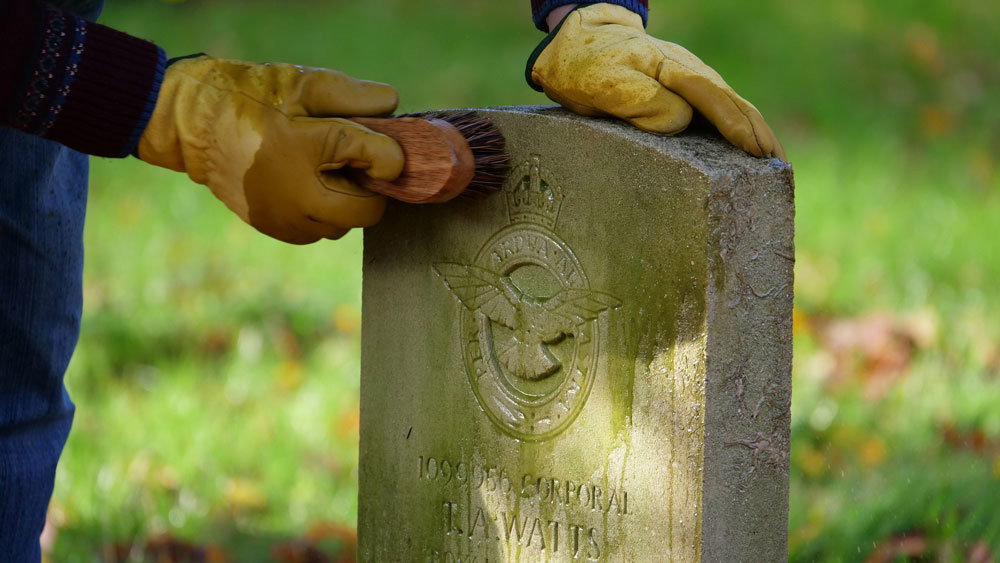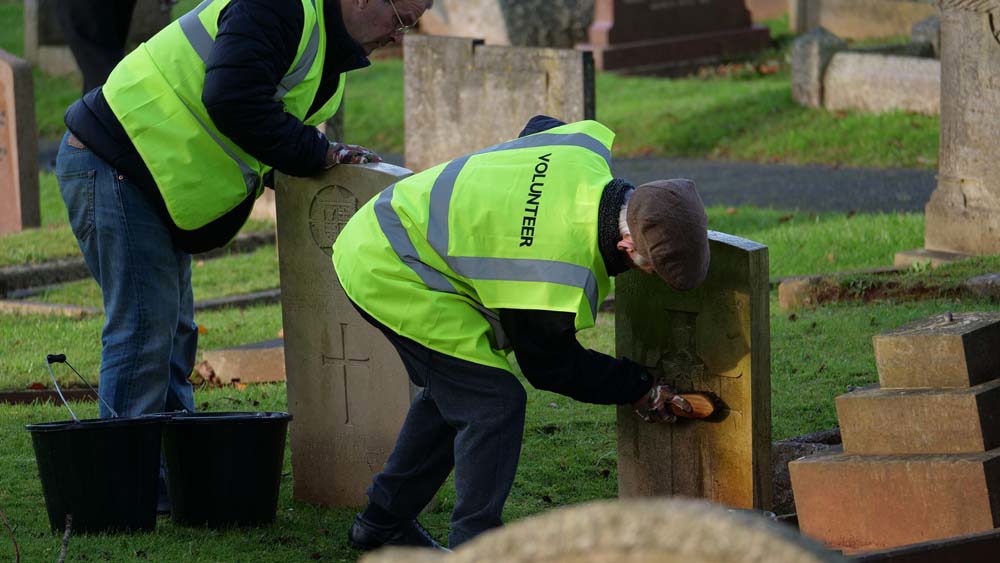01 February 2023
A day in the life of an Eyes On, Hands On volunteer
Eyes On, Hands On is one of the CWGF’s cornerstone volunteering projects. Learn more about the work we do, and the people who do it, with this EOHO day in the life.
Eyes On, Hands On
What is Eyes On, Hands On?

Eyes On, Hands On (EOHO) is a volunteer-led programme that helps us maintain Commonwealth War Graves Commission war graves across the UK.
With over 160,000 headstones across the country, sometimes the CWGC’s maintenance teams need a little helping hand when it comes to caring for war graves.
Volunteers are trained to be our eyes on the ground. They go into UK war cemeteries and memorials to review the status of headstones there. If necessary, headstones are given a good scrub with a brush and water, and any larger problems are noted and reported back to the Commission’s maintenance team.
Meet some of our EYES-ON, HANDS-ON volunteers
 Image: David Edwards, one of our Eyes On, Hands On volunteers (Courtesy of David Edwards)
Image: David Edwards, one of our Eyes On, Hands On volunteers (Courtesy of David Edwards)
We sat down with four Eyes On, Hands On volunteers to learn about their project experiences.
First up is Len and Jan Pritchard from Essex, aka Team Pritchard. Len and Jan have been volunteering with EOHO since 2020. Based in Essex, Team Pritchard’s patch includes CWGC cemeteries in Lorne Road in Brentwood, Grays, South Ockendon, Aveley, Fobbing, and North Stifford.
So, how did Team Pritchard get involved with Eyes On, Hands On?
“I have had an interest in war graves for a while, my uncle is buried in Naples, he was killed in World War Two and my friend’s great grandfather is remembered at Vis-En-Artois," Jan said. "We were lucky enough to be able to attend Thiepval in 2016 for the anniversary of the battle of the Somme and we were also at Tyne Cot in 2018 and thought it would be nice to be able to be involved with something in the UK.
"I am also retired so it is something that I can occupy some of my spare time with I also then got my husband involved, he started out as my folder holder and is now a fully-fledged volunteer."
While Eyes On, Hands On is a great way for retirees to keep active and meet new people, the project is open to history enthusiasts across the generations.
David Edwards is one of the younger members of our Eyes-On, Hands-On community.
“I joined EOHO at the very beginning of October 2020,” David told us. “I work as a web designer, and the company I was working with at the time was looking to tender for the new CWGC website.
“Naturally I started looking around the website and noticed the volunteer work that was done and then found information on the EOHO project, which I promptly then signed up for!”
Where does EYES-ON, HANDS-ON take place?
As we touched on earlier, Eyes On, Hands On is a UK-wide initiative. Just take a look at volunteer Richard Hoyle’s patch.
Rich, an EOHO volunteer since June 2021, covers a wide spread of sites across South Wales.
“I look after 45 sites with 292 casualties in Monmouth, Caerphilly and Swansea counties,” Richard told us. “On paper, it seems like a strange spread of sites, but it works well since I spend time with work, home, and family across South Wales.
Jan and Len Pritchard are focused on reviewing and maintaining war graves in Essex. Their largest cemetery is Lorne Road, Brentwood, home to 44 war graves. Compare that to the single casualty Team Pritchard keeps an eye on in a Grays churchyard.
“I am pretty lucky with the sites I got allocated as they’re all within a reasonable distance from me – one of the benefits of joining EOHO at the very beginning,” David Edwards said.
“I have six sites in total with 1 casualty being the smallest site in Oakley, Basingstoke, and the largest being Holy Ghost Cemetery (Basingstoke South View Cemetery) containing 22 casualties from both World Wars.”
A typical day in the life of an EYES-ON, HANDS-ON volunteer

Some Eyes On, Hands On volunteers hard at work cleaning headstones. Sometimes all you need to do a great job is warm water and a sturdy brush!
Is there such a thing as a typical day in the life of an Eyes On, Hands on volunteer? It depends on the team or individual’s personal approach.
For example, Richard Hoyle has a three-month rolling plan to care for the men and women under his care.
“Some of the sites I look after are easier than others,” Rich explains. “I plan how many I expect to complete in one day.
“Planning to be out for the day is a great excuse for a bacon and black pudding roll!”
 Image: Jan and Len Pritchard, aka Team Pritchard. Thanks for your hard work team! (image by Claire Jones, courtesy of Jan & Len Pritchard)
Image: Jan and Len Pritchard, aka Team Pritchard. Thanks for your hard work team! (image by Claire Jones, courtesy of Jan & Len Pritchard)
Team Pritchard, on the other hand, tend to visit the war graves under their twice a year, as Jen explains: “We typically visit the graves in the early spring and around six months later, given the amount we have it takes a couple of days to get round to them all, though only a few hours in each day.”
For David, who tends to split his EOHO time between caring for his smaller sites and the larger cemeteries on his patch, the day starts with one important element.
“First thing first is to pack snacks,” David said. “It can be hard work cleaning graves.
“Then it’s time to pack the car with my kit, including plenty of water bottles as not all my sites have water access, not many do and you can easily go through a bucket's worth cleaning just a couple of headstones.
“Once I visit my site, I take a few photos as it’s always good to see the before and after. Then it’s straight to grass cutting, weed pulling and plenty of scrubbing of the headstones! I tend to not clean the headstones too frequently, just remove the bird muck and soil and depending on the material they don’t need too much.”
How much attention does a site require? That depends on seasonality and its condition.
Richard shared how he plans his day when on Eyes On, Hands On business: “I usually plan for around half a day, depending on the time of year and the sites on the plan.
“A few sites need a little more effort with the growth of grass around the Commonwealth Headstone – but these are the most rewarding when you see the difference your visit has made.”
If headstones cannot be read, the casualty it marks is in danger of being forgotten. It’s our mission at the Commonwealth War Graves Foundation to ensure the sacrifice of Commonwealth’s war dead is never forgotten. Headstone legibility is a small but important part of that.
Capturing headstone photos is also an important part of the Eyes On, Hands On process. We don’t call our volunteers our “eyes on the ground” for nothing!
Headstone photos are taken. These are sent back to us to share with the Commission’s ground staff to monitor if any drastic repairs are necessary.
“We photograph each commission headstone and private memorial, then submit a report and the photos to our project leader,” said Jan Pritchard. “If any need cleaning or tidying we then make a return visit to carry out those works.
“Now though we will be able to take our cleaning gear with us. If we feel that a stone needs cleaning, we can carry it out on the same day as we take the photographs.”
Once photos are taken and any grass trimmed, or any headstones cleaned, then it's back in the car for Richard, David, and Team Pritchard. A job well done!
Why do our volunteers enjoy EYES-ON, HANDS-ON?
What people get out of their time volunteering with us differs from person to person. Volunteering itself has many brilliant benefits, but what does David, Len and Jan, or Richard take away from their Eyes On, Hands On experience?
“I feel immensely proud to be part of a team of volunteers, who give their time to visit, survey and care for war casualty graves scattered across the UK,” Rich said. “I take pride knowing that the 292 ladies and gentlemen in my care are looked after and that their memorials can be recognised clearly and honoured.”
“Team Pritchard enjoys the sense of carrying out some essential works to take the load off of the commission,” Jan said of her and her husband’s EOHO experience. “We feel a sense of pride in being able to take care of ‘our boys’ and make sure they are looked after and remembered for as long as we are able to do it.”
For David, Eyes On, Hands On also helps share the fact that war graves can be found all over the UK – not just in purpose-built war cemeteries.
“When people come up and ask questions, I assumed they would think I’m up to no good as I generally wear a baseball cap and I’m lurking around old cemeteries,” David joked. “But most of the people have been very positive and wanted to learn more.
“It’s amazing how many people don’t realise what these graves are.”
Thanks for helping us tell their stories, David.
Keep your eyes open for more Commonwealth War Graves volunteering opportunities
Want to volunteer with us?
Head over to the Commonwealth War Graves volunteers page to learn more about volunteering opportunities available to you.

